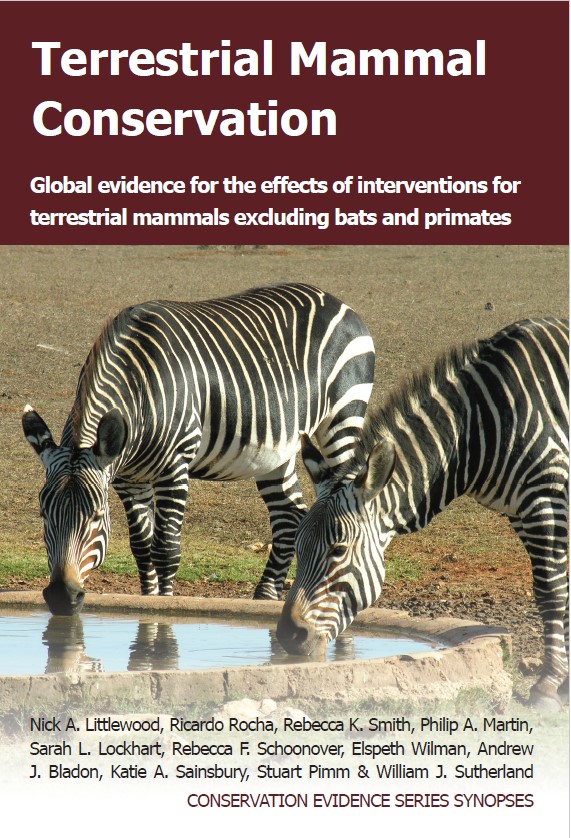Control ticks/fleas/lice in wild mammal populations
-
Overall effectiveness category Unknown effectiveness (limited evidence)
-
Number of studies: 2
View assessment score
Hide assessment score
How is the evidence assessed?
-
Effectiveness
50% -
Certainty
30% -
Harms
0%
Study locations
Supporting evidence from individual studies
A replicated, paired sites, controlled study in 2009–2010 on six grasslands in Utah, USA (Jachowski et al. 2012) found that following treatment with a grain-bait insecticide product, there was no consistent reduction in flea burdens on Utah prairie dogs Cynomys parvidens. After one summer, fewer fleas were recorded on prairie dogs in treated than untreated colonies at two sites, there was no difference at one site and more fleas were recorded in treated than untreated colonies at one site. After the second summer (with treatments applied twice) there were fewer fleas on prairie dogs in treated than untreated colonies at one site and no difference at two sites. See paper for full data. At six sites with prairie dog colonies, treatment and control plots were established, covering 2–190 ha, depending on animal density. Four sites were monitored in 2009 and three in 2010. In 2009, 56 g of imidacloprid-treated oat grain bait (Kaput®) was scattered within 2.4 m of each burrow in treatment colonies, once in May–June. Imidacloprid is an insecticide that can reduce burdens of fleas and, thus, reduce the risk of transmission of plague. In 2010, the treatment was applied twice, five days apart, in April–May. Prairie dogs were trapped monthly, using 100 live traps for five days in both treatment and control areas at each site, in June–October, and combed to count fleas.
Study and other actions testedA controlled study in 2002–2010 in a forested area of Alaska, USA (Gardner et al. 2013) found that treating wolves Canis lupus with ivermectin cleared them of infestations of biting dog lice Trichodectes canis. All of 12–19 wolf packs treated with ivermectin, were lice-free in the winter following treatment. In spring, 15–50% of packs were infested over the three years of treatments, 5% were infested the following spring, with 0% spring infestation in the last two years of monitoring. Three untreated packs remained infested throughout four years of monitoring. In a 13,000-km2 study area, lice infestation in two packs was confirmed by inspecting animal hides harvested by trappers in 2002–2005. Moose or lynx meat, injected with ivermectin, was distributed aerially at den and rendezvous sites of 12–19 wolf packs at 10–20 day intervals in 2005–2007. Infestation status and responses to treatments were determined by live-trapping wolves, direct observations and by inspection of hides obtained from trappers during 2005–2010.
Study and other actions tested
Where has this evidence come from?
List of journals searched by synopsis
All the journals searched for all synopses
This Action forms part of the Action Synopsis:
Terrestrial Mammal Conservation
Terrestrial Mammal Conservation - Published 2020
Terrestrial Mammal Conservation





)_2023.JPG)














